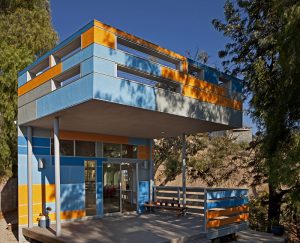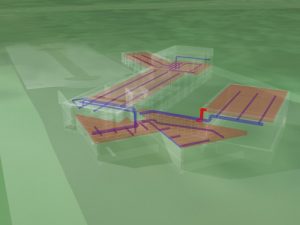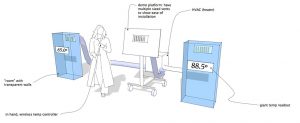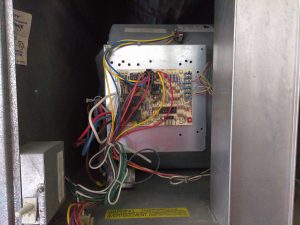HVAC Design is an active strategy that can help reduce energy waste thanks to mechanical heating, ventilation, and air conditioning systems.

image source: https://www.flickr.com/photos/25186605@N04/17336546501_ byJeremy Levine
The first equipment and techniques were developed in the 1930s and 40s and solidified by the 50s and 60s. Since then, gradual improvements in efficiency, comfort, and reliability made HVAC an important part of modern life: it is used in residential structures, industrial and office buildings, hospitals, vehicles such as cars, trains, aeroplanes and much more.
wHAT CAN HVAC SYSTEMS DO?
While not all HVAC systems are the same, most of them operate on some similar basic principles.
- Central cooling: arguably the most common type of HVAC system, consists of an outdoor condenser coil and compressor, and an indoor evaporator coil. The secret to central cooling comes down to the refrigerant that’s pumped through the system by the compressor. The heat from the air in your home transfers to the refrigerant as the refrigerant passes through the evaporator coil. This transfer cools the coil, which air then blows across, travels through a duct network, and into your home.
- Central heating: rather than relying on refrigerant, it warms combustion gases that are then passed through a heat exchanger. Air blows across the heat exchanger, warming it before it spreads throughout your home. In addition to the heating and cooling components of your HVAC system, filters in your system catch potentially harmful particles before air is distributed through your home.
- Ventilation: the process of exchanging air from indoor to outdoor.
- Moisturizing: refers to the process of increasing the relative humidity through the addition of water vapour into the system.
- Dehumidifying: the prose removes moisture from space.
- Cleaners: air purification to remove flying dust and dirt.

image source: https://search.creativecommons.org/photos/d988b772-c25b-4d21-901a-2531dac6bbbb by jakerlyon
HVAC SYSTEM components

image source: https://search.creativecommons.org/photos/c095c16e-f297-44a1-aad6-a1881ba180f5 by juhansonin
Thermostat
The thermostat is an important component of the HVAC system because that’s what triggers the entire system to start cooling or heating. It’s located centrally in the home and programmed according to the occupants’ preferences.
Furnace
The furnace is located in the home and its job is to heat the air that comes through the system. This is most often done through combustion in which oil, natural gas, coal or propane is burned.
Evaporator Coil
The evaporator coil works during the summer to cool the air in the system. It’s on the top or side of the furnace inside the home.
Heat Exchanger
The heat exchanger’s role is opposite that of the evaporator coil. It pulls in cold air and heats it so that it can be circulated throughout the home just as the cool air from the evaporator coil is circulated.
Condensing Unit
The condensing unit is located outside the home and is connected to the evaporator coil. The condenser contains refrigerant gas which is cooled through heat exchange. The gas is compressed and condensed into liquid and sent through lines to the evaporator coil. The liquid gas is then converted back to a gaseous form and sent back to the condenser so that the process is repeated over and over.
Refrigerant Lines
The refrigerant lines are what carry the refrigerant between the evaporator coil and the condensing unit. They’re made of either copper or aluminium so that they can work in extremely hot or cold weather.
Ducts
Ducts are an important component of HVAC in Alpharetta that sometimes get overlooked. The ducts run throughout the house to deliver air to each room. A properly built duct network is essential for the HVAC system to run effectively.
Vents
Finally, vents are cut into the ducts to allow the air to enter the room. The vent, or register, is made of slatted metal to channel the air a certain direction into the room.

Info source: https://en.wikipedia.org/wiki/Heating,_ventilation,_and_air_conditioning
